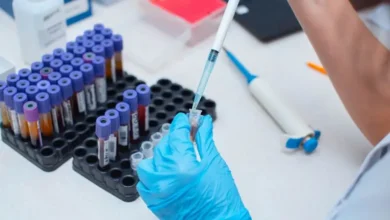Reasons of Increasing stroke cases in young adults to be aware of

Stroke is the second leading cause of death globally and a leading cause of long-term physical and cognitive disability in adults but though stroke was thought to mainly occur in older individuals, with majority of strokes in people who are over the age of 65 years, recent years have seen an increasing incidence of stroke among young adults. An Indian study has put the incidence of annual stroke at 41 per 100,000 in the 40–44 age group which is very high.
In an interview with HT Lifestyle, Dr Vishal Chafale, Consultant Interventional Neurology at Apollo Hospitals in Navi Mumbai, shared, “Factors contributing to this increase include those similar to the general population such as hypertension, hypercholesterolemia, obesity, diabetes mellitus, smoking and heart disease. Today, work stress, sedentary lifestyles and unhealthy eating habits are contributing significantly to a rise in these non-communicable diseases (NCDs). Many young people spend hours in front of screens for work and leisure, exercise infrequently, and opt for convenience foods that are high in salt, sugar, and unhealthy fats, a lifestyle that predisposes them to NCDs.”
He advised, “A holistic approach will help to reduce these modifiable risks. This includes stringent control of the blood pressure, better control of blood sugar levels in diabetics, and lifestyle modification with dietary changes. Smoking and other drug use must be stopped. Awareness about the importance of a healthy lifestyle and regular health check-ups are also important in preventing stroke among young adults.”
Dr Annu Aggarwal, Consultant Neurologist Specialist Cognitive and Behavioural Neurology at Kokilaben Dhirubhai Ambani Hospital in Mumbai, revealed, “Around the world there are 12.2 million strokes / year. That translates into 1 stroke per 3 seconds. Stroke stats: 1 in four people will have a stroke in life time. Stroke is no longer a disease of the elderly – 63% of the strokes happened in people under 70 years of age. 10-15% of all strokes occur in adults 18-50 years of age.”
She listed the causes of stroke in youth as:
1- Though traditionally high blood pressure, diabetes etc are considered disease of the elderly. It is increasingly being recognized, that young adults develop these diseases that increase the risk of stroke and heart attacks even at a young age.
2- The 11 risk factors are: high systolic pressure, high BMI, high fasting blood sugar, air pollution, smoking, poor diet (high fat, high carbohydrate, low protein), high LDL cholesterol, kidney dysfunction, alcohol use, low physical activity, compromised sleep.
3- Sedentary lifestyle is now the “new smoking”
According to Dr Annu Aggarwal, other causes of stroke in young people are –
1- Recreational drug abuse: for instance, cocaine (big rush, glad stuff, happy dust, paradise, nose candy), Cocaine + marihuana (candy stick), cocaine + heroin (brach, speed ball), Cocaine + methamphetamine (crock), cocaine + tobacco (Coolie), methcathinone (KAT), ecstasy etc.
2- Trauma to neck resulting in injury to brain blood vessels (dissection) e.g. following road traffic accidents, adventure sports, diving in swimming pools etc, particularly if safety precaution are not followed e.g. seat belts, helmets.
3- Rare types of blood clotting defects
4- Structural defects in heart valves and heart wall (holes in the heart, eg atrial septal defect)
5- Certain cardiac arrhinias
6- Certain infections such as HIV, Herpes virus infection, COVID-19 strains during the first wave in 2020
7- Rarely autoimmune mediated brain walls inflammation (vasculitis) or several rheumatological condition.
Dr Annu Aggarwal suggested the following treatment:
-The first three hours after the stroke are golden hours and if patients reach stroke-ready hospitals, many of the strokes can be reversed with appropriate therapy
-Healthy lifestyle and diet and periodic health check -ups can prevent strokes and heart attacks. It is never too early and never too late to adopt these measures.
Dr Rajesh Jaria, Consultant Internal Medicine at PD Hinduja Hospital and MRC in Khar, opined, “Science believes, and one expects, will always believe, in the Theory of Evolution. In India religion takes the fore front with science relegated to the back burner. The pandemic brought to fore a similar relegation of science to the back-burner and superstition to the fore, in many parts of the world also. It takes one to be in pain and in suffering, to turn around assert what is really effective as useful, and banish that which doesn’t provide relief. Science has steadily grown to dominate and in-fact overtake human life involvement and control, as it slowly initially, but steadily, provided a significant improvement in QOL, encompassing all aspects of life as it gained pace.”
He elaborated, “This all-encompassing phenomenon, eased life’s strains but as with all good things, the negative comes with the positive. Home hand-ground wheat flour gave way to machine run mills. Humans walking gave way to easy-accessed autorickshaws. The earlier man who walked 20 kms was replaced by the man who walked almost not at all. The above information will of-course trigger guilt. Intrinsically humans tend to ascribe self-blame. I’m fat hence, I’m ill I didn’t control my food intake hence, I’ve developed heart disease. Dichotomously, people also take pride in being ‘foodies’.”
Accusing atherosclerosis as the common pathway leading to heart disease, Dr Rajesh Jaria said, “The belief is, if one exercises, eats less, exerts self-control and does not live a sedentary lifestyle, one will prevent atherosclerosis and hence heart disease. Cause of atherosclerosis are multifactorial: genetics, environment, infections and partially life style, influences its development and evolution in humans. Life style alone cannot prevent or control or delay atherosclerosis. If LSM has to play a significant role in reducing heart disease it needs to be consistent, persistent and inculcated from an early age. As in the earlier days, even a five-year-old walked 10kms to school. Then as he grew he covered 20 kms a day and his poverty ensured a frugal intake, low in fat and high in plant protein.”
He concluded, “Animal protein was interspersed in his diet more as a rare treat, then as a daily routine. This natural element of ‘life style modification’ intrinsic to an everyday life from a young age, and maintained throughout life will reduce the incidence of heart disease. It will not make the risk zero. This natural, intrinsic, daily routine life style modification should be the desirable quality of living life that helps to reduce the risk of heart disease.”










